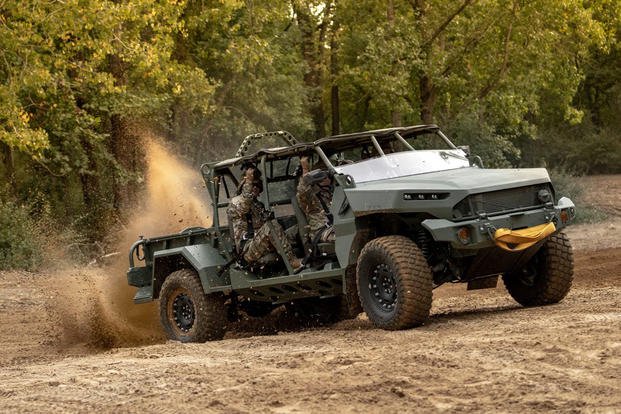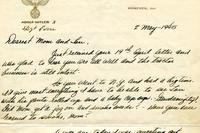Troops in contact! The forward operating base comes alive. Strap on your plate carrier, throw your assault pack over your shoulder, grab your rifle and suck down some water on your way out the door.
The fittest quick response force in the world couldn’t get there in time on foot. A truck would be too slow -- and besides, the only one you have is doubling as a guard tower for your FOB. There’s a third option, though, and your buddies who are taking fire are lucky it exists.
The U.S. Army is in the process of fielding the Infantry Squad Vehicle (ISV). It’s a midsize pickup that’s stripped to the bare essentials, beefed up with military tech and ready to whisk soldiers across the battlefield faster and with more agility than any current Army vehicles could hope for.
Let’s grab some wrenches and get under the hood of the Army’s new off-roader.
What Is the ISV?
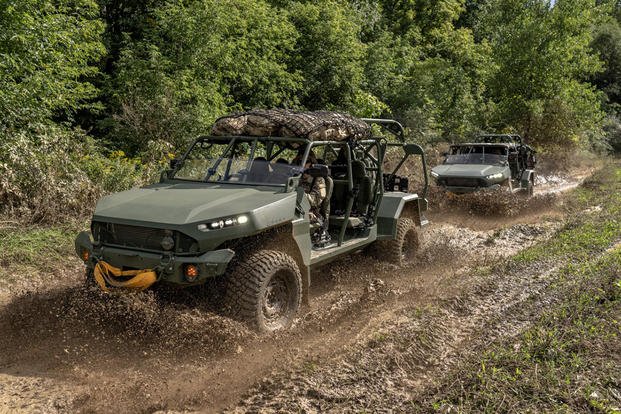
The U.S. military has an impressive array of vehicles, but there is one capability gap. The Army can insert troops rapidly into remote areas via helicopter or parachute. It has trucks, tanks and specialized vehicles that can bring overwhelming firepower to the enemy’s doorstep. There isn’t much between the two, though. Soldiers are either arriving at the fight in an armored truck or a pair of boots.
The ISV fills that void by turning small units into highly maneuverable mounted forces that can cover ground faster than any foot soldier but without the limitations (and target profile) of a heavy gun truck.
GM Defense created the ISV by stripping down the Chevrolet Colorado ZR2 to its core. According to the spec sheet, 90% of the ISV’s components are commercially available. Under that olive-drab exterior, you’ll find axles, differentials and suspension that you can buy from the parts counter at your local Chevy or GMC dealership.
Other common GM components include the 2.8-liter Duramax engine from the diesel Chevy Colorado and GMC Canyon, the 6L50 six-speed automatic transmission found in vehicles ranging from the Colorado to GMC Yukon XL Denali, standard GM electronics and standard GM disc brakes.
Military-specific features include a roll cage instead of an enclosed cab, seating for nine, and a suite of adaptable kits that includes mounting points for weapons, optics and lights. The ISV uses a combination of analog and digital gauges to provide vital information even when a digital screen is a no-go.
As far as the Army’s adoption of the ISV goes, the vehicle hasn’t always satisfied soldiers during testing. Previous assessments of the vehicle by the Defense Department's chief weapons tester initially indicated issues ranging from a cramped design to a “lack [of] the capability to deliver effective fires, provide reliable communication, and force protection” for an infantry squad.
But according to the service, GM Defense has made “significant improvements’ to the ISV based on soldier feedback, and in recent years the automaker has “implement[ed] corrective actions to address reliability and maintainability deficiencies identified in previous testing,” according to the DoD weapon tester’s latest assessment.
The Army is currently fielding the ISV to the 82nd Airborne and 101st Airborne (Air Assault) Divisions, “with other light forces to follow,” according to GM Defense.
“With robust off-road capabilities, the highly reliable ISV significantly improves tactical mobility across a range of military operations,” the automaker says. “The vehicle is easily maintainable and highly adaptable to meet diverse mission and operational needs.”
ISV Variants
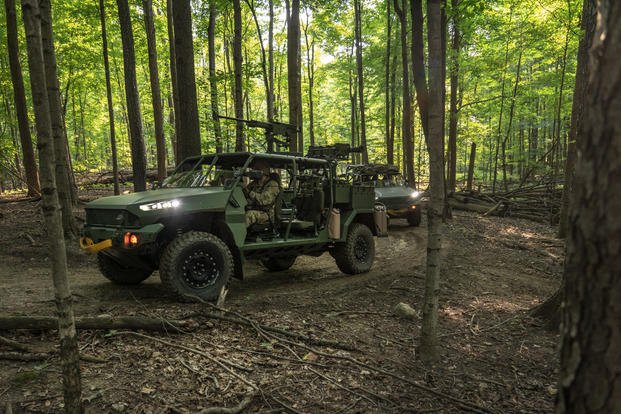
Part of the ISV’s magic is its ability to shape-shift, depending on mission requirements. GM Defense currently lists four alternatives to the nine-seat troop carrier.
A two-seat variant boosts cargo room with a seven-foot flatbed and a 3,200-pound payload while maintaining the ISV’s compact footprint.
Pickup trucks are undeniably useful, and GM Defense builds four- and five-seat versions of the ISV that have a 5.5-foot bed for hauling equipment. This might be the platform’s most versatile configuration.
The Army has proven its ability to mount weapons on just about anything, but the heavy gun carrier (HGC) variant of the ISV is a modified version of the five-passenger ISV that includes a ring turret for a heavy or medium machine gun. The 5.5-foot bed provides plenty of room for ammunition and spare barrels.
All of these vehicles use the same drivetrain, but there is an all-electric E-ISV in the works. GM Defense aspires to create a silent, fast, rugged combat truck with this concept vehicle.
Customized Kits for Any Mission

No vehicle is complete without a few modifications and personal touches, and that goes for the ISV, too. Beyond choosing one of the available variants, units can add attachments to enhance mission capability.
Since the ISV’s visible white headlights are far from ideal on the battlefield, GM Defense offers infrared lights that are only visible when using night vision. If you’ve ever used an infrared light or strobe, you know how effective these can be. That advantage is even more important if you’re driving at high speeds through a kinetic area.

The HGC variant’s top mount is also available as a kit. The 46-inch ring serves as a turret that allows soldiers to direct fire in any direction with a medium or heavy machine gun. That allows soldiers to mount a Mk19, M2 or suppressed M240 (which is every bit as incredible as you imagine).
If a top-mounted turret doesn’t provide enough firepower, units can add swivel mounts to the side of the vehicle. Each mount allows soldiers to add an M240 or M249 and position it exactly where they want it.
The ISV isn’t just a formidable threat; it can save lives when every second counts. A CASEVAC kit adds the ability to mount a stretcher to the vehicle’s roll cage. When not in use, the kit collapses into compact storage bags.
No Battlefield Is Safe from the ISV
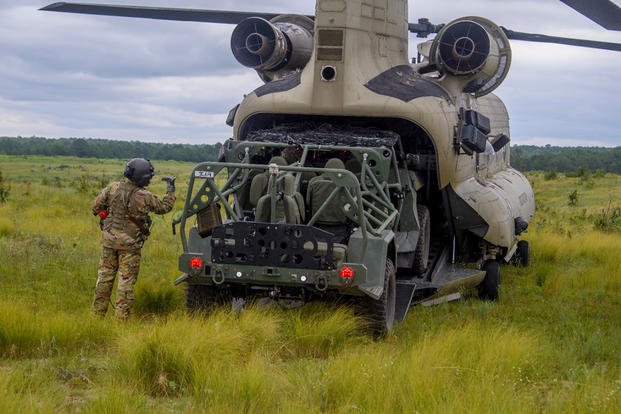
In automotive terms, the ISV isn’t exactly a speed demon. GM Defense declined to use the Colorado ZR2’s 310-horsepower gasoline engine, after all. But soldiers don’t need it to blaze across continents on the highway; they have other vehicles for that. They need the ISV to be responsive and powerful on rugged terrain, and it does that extremely well.
The grunty turbo diesel offers peak torque early in the RPM range, meaning power is always available and doesn’t require the engine to work hard to produce it. Front and rear locking differentials from the Colorado ZR2 should be able to pull the ISV through just about anything, especially given its sub-5,000-pound curb weight.
The ISV is a reminder that there are times when being light and nimble is better than being big and strong. Anyone with off-roading experience has seen heavy-duty rigs get bogged down while Jeep Wranglers and Suzuki Samurais casually roll on by (case in point: this head-to-head matchup pitting a Range Rover against a Suzuki Jimny). Compared to other military vehicles, the ISV floats through mud, is a piece of cake to winch out of trouble, and slips through trees and urban environments as easily as a passenger car.
The ISV’s compact dimensions are another source of speed, even more so than its engine. At 207 inches long, 82 inches wide and 84 inches tall, the ISV can fit inside a CH-47 or CH-53. It can be sling-loaded under a helicopter or flown inside a C-17, C-130 or A-400M. That makes it one of the most expeditionary vehicles in the U.S. military arsenal.
The ISV Ushers in a New Era
Service members of a certain age will remember a time when the Humvee was the hottest military tech on four wheels. The old, muscled-up 4x4 is in its sunset years now, and the nimble ISV is the future.
This new vehicle is everything we love about the Humvee without the baggage. Aluminum body panels don’t offer any protection, so GM Defense got rid of them. There’s no heavy armor because we have gun trucks for missions that require that. The ISV is a “Mad Max” vehicle come to life, and it’s going to be a smash hit with front-line infantry units for years to come.
Want to Know More About the Military?
Be sure to get the latest news about the U.S. military, as well as critical info about how to join and all the benefits of service. Subscribe to Military.com and receive customized updates delivered straight to your inbox.
